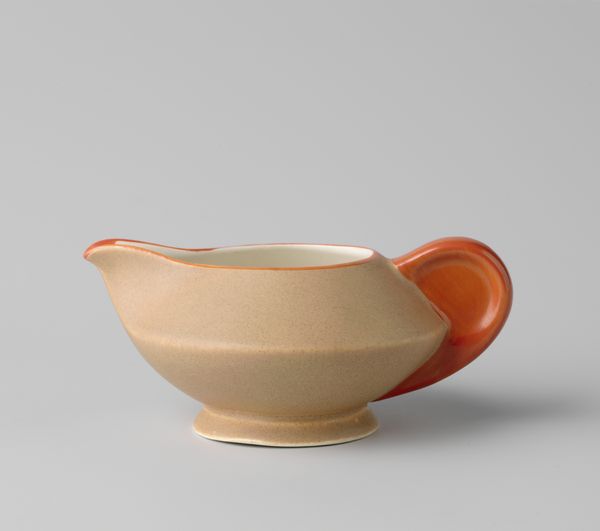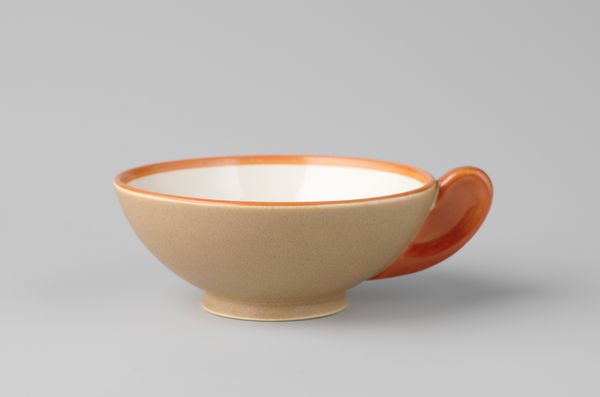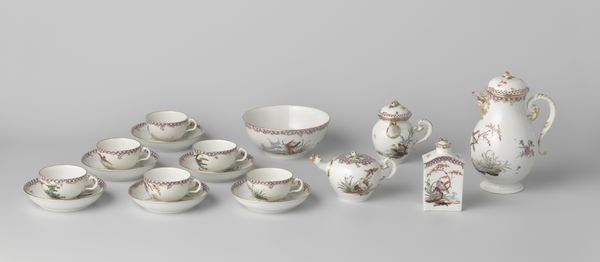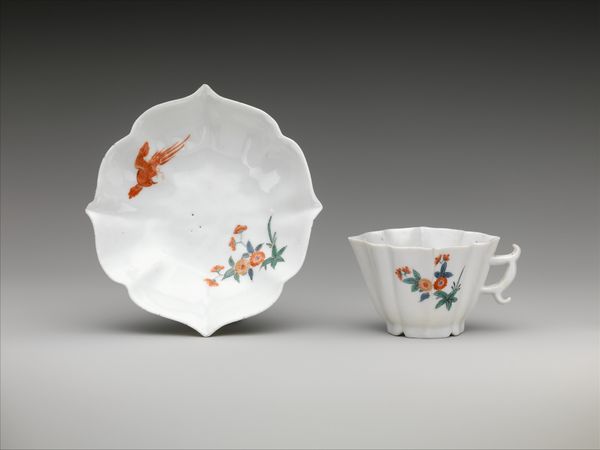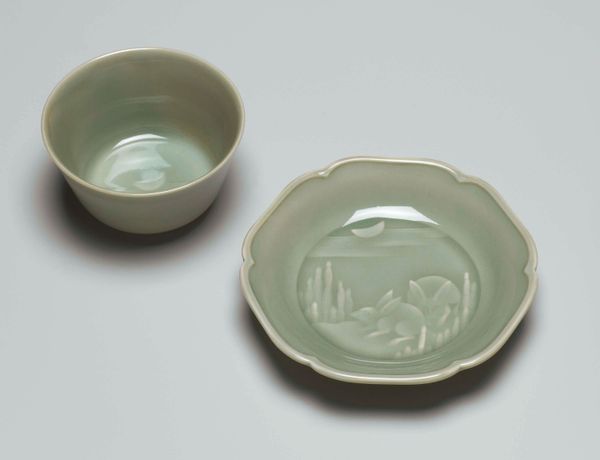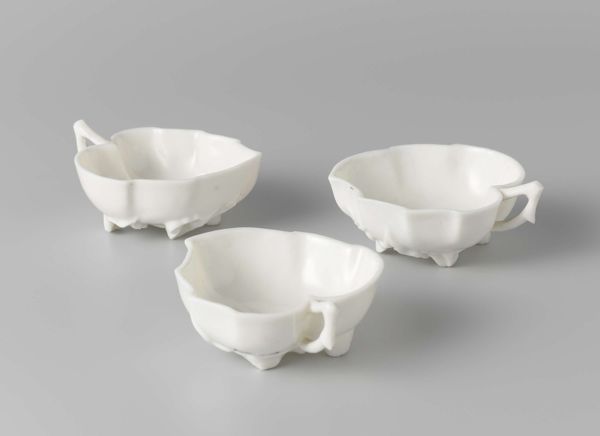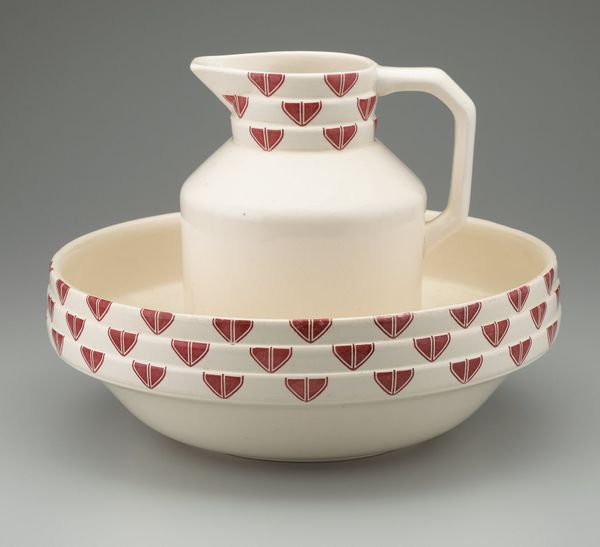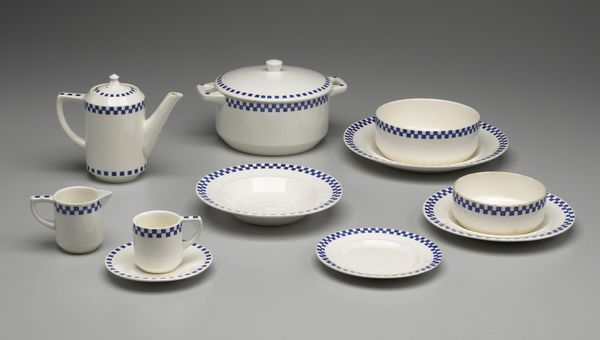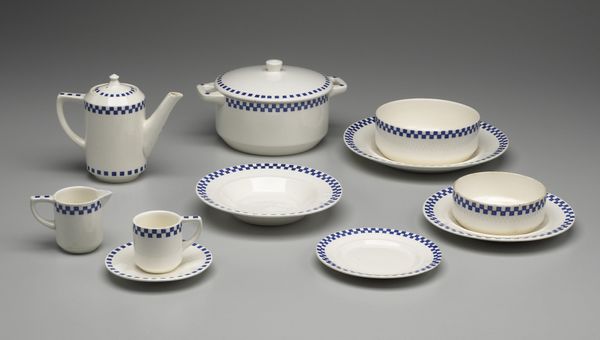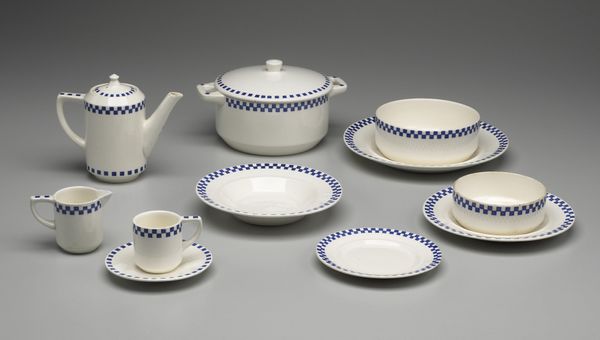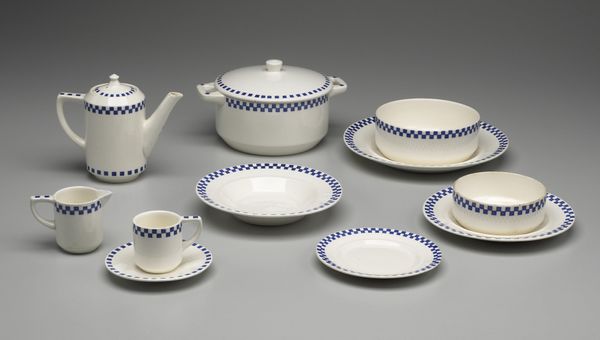
Theeservies bestaande uit theepot, melkkan, suikerpot en twaalf koppen en schotels 1934
0:00
0:00
ceramic, earthenware
#
art-deco
#
ceramic
#
earthenware
#
decorative-art
Copyright: Rijks Museum: Open Domain
Editor: Here we have "Theeservies bestaande uit theepot, melkkan, suikerpot en twaalf koppen en schotels," or a tea set consisting of a teapot, milk jug, sugar bowl, and twelve cups and saucers, created in 1934 by Petrus Regout. I’m struck by the almost architectural quality of the pieces, the interplay of geometric forms creating a sense of streamlined elegance. What do you see in this piece, from a formalist perspective? Curator: The power of this earthenware service lies precisely in that interplay you mention, a conversation between form and function mediated by line and plane. Note how the conical forms are echoed and reiterated across each object, a formal unity achieved through subtle variations in scale and proportion. Consider also the limited color palette—the matte earthenware contrasted with the glossy, almost electric orange accents. These create visual focal points and energize the otherwise muted composition. Editor: The orange definitely draws the eye! It feels very deliberate, not just a functional element, but a key part of the design. Curator: Precisely! Function follows form, but the choice of color elevates function into aesthetic consideration. Examine how the curvilinear handle on the teapot plays off the sharper lines of the lid and body; a similar gesture repeats with each handle and spout in other items. These opposing formal vocabularies produce a dialogue within each individual object, while the repetition across the set creates a pleasing whole. How do these formal observations resonate for you? Editor: I appreciate that. The limited palette really highlights the shapes. Before, I liked the tea set but didn't really see *why* it was good design. Now I have some better words to put to my initial feeling, and it makes me look at other design differently too. Curator: And that, I believe, is one purpose of formalism: training our gaze and enabling a more nuanced vocabulary with which to articulate our responses to design. We come to understand not simply whether we like something, but *why*.
Comments
No comments
Be the first to comment and join the conversation on the ultimate creative platform.

